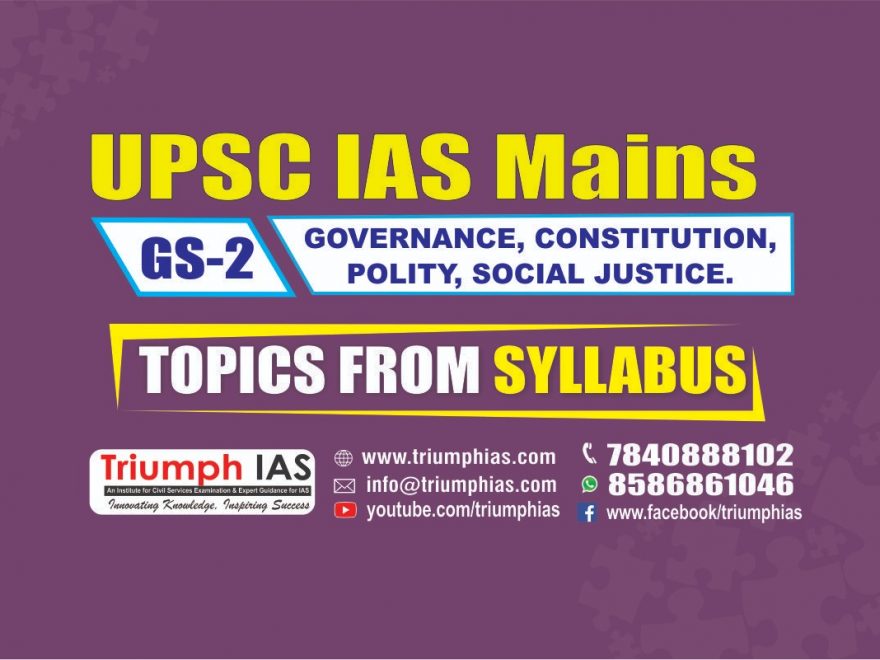Relevance: Mains: G.S paper II: Government Schemes and policies
Context
India is a country with abundant water resources, yet, it is confronted with severe water crisis.
India’s Water Endowment
- India is not a water-deficient country. In fact, it has abundant water resources.
- The annual precipitation (rain and snowfall) is close to 1,200 millimeter (mm).
-
- Much higher than the global average of around 1,000 mm.
- India’s geographical area is 2% but it gets 4% of the global freshwater every year.
- It is a plentiful resource that can meet all the water needs of India’s people.
Analysis of the water crisis in India
- According to a study conducted by NITI Aayog, the demand for portable water will surpass the supply by 2030.
- A World Bank report in 2018 claims that more than 600 million people have faced moderate to extreme water-stress in India.
-
- About two lakh Indians die every year due to inadequate access to safe water.
- Twenty-one cities, including Delhi, Bengaluru, Chennai and Hyderabad, will run out of groundwater by 2020.
- The Central Pollution Control Board says that even the Ganga river water is unfit not only for drinking but also for bathing!
- In short, India is facing a very severe water crisis, largely man-made and as a result of ineffective policies pursued by the successive governments.
Reasons for the water crisis
- The Composite Water Management Index developed by the NITI Aayog shows that 70% of the water resources are polluted due to the dumping of untreated wastewater and sewage in rivers.
- Climate change and its consequences are making the monsoons more unpredictable and volatile.
- It is well-known that monsoon is temporally and spatially skewed in distribution which causes recurrent droughts in some areas, and in other places, monsoons cause flash floods due to heavy downpour.
- Destruction of the riverine ecosystem, deforestation and neglect of the catchment areas, and encroachments of floodplains are all contributing and amplifying to the water crisis faced in many areas.
- For ages, people have been effectively practising rainwater harvesting, which ensured water security to everyone. Unfortunately, we have neglected and allowed to die that traditional wisdom in the name of economic growth and globalisation.
- Lack of on-time de-silting operations in large water bodies that can enhance water storage capacity during monsoon. It is surprising that the governments at state levels have not taken this up on priority as an annual practice
- Lack of efficient water management and distribution of water between urban consumers, the agriculture sector and industry.
Challenges in addressing the water crisis
- The prevalent techno-engineering pathway of harvesting water is by large surface storage and creating a grid or interlinking of rivers which will now have a massive component of the pipe network and it is not viable.
- Water literacy is a crucial prerequisite while taking decisions on water, irrigation, crops and overall development policies and programmes. Our policymakers, public representatives, bureaucrats and technocrats are, by and large, resource-illiterate.
- India’s irrigation system is one of the most inefficient one in the world.
- Though Jal Shakti ministry was created for addressing the issue, urban water supply and watershed development are not within the jurisdiction of this ministry. Also, there is no well-defined policy perspective to guide this new entity
- Jal Shakthi Abhiyan (JSA), is the initiative of the new ministry. It is the policy perspective of water resource development is conceptually flawed and operationally lousy. The approach is top-down, based on engineering hardware of pipes, and the water delivery is based on long-distance supply sources.
- The JSA is opposing to the local initiative of the rainwater harvesting and water conservation, as the Abhiyan proposes water supply through pipes from long distances.
Way forward to address the water crisis
- To encourage the age-old systems of rainwater harvesting environmentally safe water storage systems, it would be socially just and economically low-cost.
- Climate change is one of the main factors in making the monsoons more unpredictable and volatile. Therefore, steps should be taken to address climate change as well.
- Keeping in view the basic hydrological, hydro-geological, agroclimatic conditions, a scientific and societal approach to harness and harvest the abundant endowment of water into an actual utilisable resource is the need of the hour.This requires ingenious planning and meticulous management.
- There is a huge potential to harvest rainwater. A massive programme of rainwater harvesting on the scientific principles of ridge-to-valley in each micro-watershed, starting with the uppermost parts of every river valley, should be planned and carried out with speed and rigour.
-
- Although we have been talking about this for decades, it is not yet a part of the well-designed scientific and community-based participatory plan designed at the micro-watershed as a base unit and scaling it up to the national master plan with the necessary budgetary allocation.
- Logistically, it should be part of the works under the Mahatma Gandhi National Rural Employment Guarantee Act (MGNREGA) programmes, the guidelines of which mandate to undertake the soil and water conservation works on priority.
- This is the key to solve not only water, food, energy and employment problems but also ensure equitable and sustainable development of India.
- The Jal Shakti Ministry should get the watershed works under its administrative jurisdiction forthwith and make it the fulcrum of the Jal Shakti Abhiyan (JSA).
- The foremost task before the water policy planning in India is to increase water-use-efficiency.
Conclusion
- There is an urgency to move on to demand management. This will require supply augmentation by use of age-old traditional water harvesting measures and methods
- Going forward the Government should introduce water resource management policies and programmes to meet the changing times considering the growing population and its needs.

